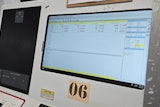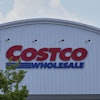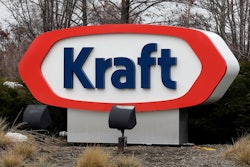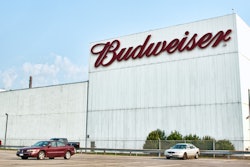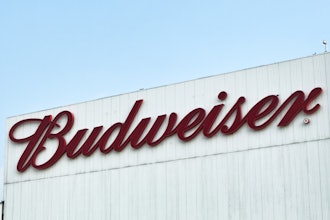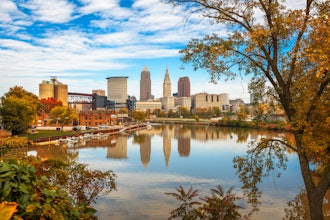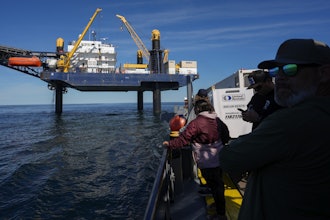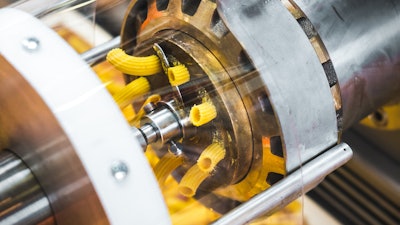
When you are cleaning up your food manufacturing facility, whether it be a packaging plant or commercial kitchen, having the right equipment to clean and sanitize on a large scale will save your business time and money. When it comes to industrial cleaning, knowing how and when to use the right equipment is crucial to maintaining the efficiency and safety of your processes. As an industrial space, there are four essential pieces of equipment you need, to keep your space clean, and more importantly up to code.
Vapor Steam Cleaners
A vapor steam cleaner will quickly become a go-to for degreasing and sanitizing various surfaces within industrial facilities. The equipment uses high-temperature steam to sanitize hard and soft surfaces without using chemicals. The antibacterial technology is highly beneficial for food preparation industries as it can quickly eliminate bacteria and other antimicrobials.
Key metrics to observe for steam cleaners are pressure and temperature. A commercial-grade vapor steam cleaner will have a temperature capacity between 300°F to around 360°F and pressure levels up to 175 psi. Compared to higher-pressure equipment such as pressure washers and hard surface cleaners will benefit from psi levels ranging from 1500 to 3000.
When to use a Vapor Steam Cleaner
Indoor high-touch hard surfaces in food manufacturing locations are an ideal match for vapor steam cleaners. A vapor steam cleaner can also clean hard floors such as tile, sealed hardwood, vinyl, and concrete. Here, using a steam cleaner with a towel attached to a large floor mop will have smaller surface areas cleaned quickly and efficiently.
Many manufacturers also take advantage of cured epoxy resin on their factory floors, as it is known for its durability. However, with high traffic and heavy equipment movement throughout the work day, the resin can be left with oil, grease, rubber, and scuff marks. A steam cleaner can penetrate this stuck-on grease and dirt without causing any damage to the cured epoxy on the factory floor.
In addition to floors, the vapor steam cleaner can be used on a smaller scale to clean stainless steel appliances and any upholstery. When working to spot clean upholstery, it is recommended to use an extractor to ensure that any displaced bacterial residue is completely removed.
Precautions
When using the steam cleaner in industrial settings, you want to allow the machine to work for you. Take advantage of the powerful high temperatures by going slow; you only have to pass over an area once. Never steam-clean surfaces comprised of pressed paper, cardboard, or non-enamel paint, as this can cause erosion of the materials. Additionally, a vapor steam cleaner is inappropriate for use on unsealed hardwood or other porous surfaces. Keep the scale of your cleaning in mind, as steam pressure washers are better suited for more extensive cleaning tasks.
Pressure Washer
Industrial-designated pressure washers will give you the power to tackle the most demanding jobs. With high-pressure levels of up to 4000 psi, these machines can quickly degrease and clean many hard surfaces. Temperatures for pressure washing can range from cold to extremely hot alongside different pressure levels to provide more versatility. However, with all that pressure comes significant precautionary measures, as industrial-grade pressure washers are unsuitable for some cleaning jobs in the food manufacturing setting.
When to use a Pressure Washer
High pressure and temperature models will be ideal for heavy equipment cleaning, degreasing of metal, concrete cleaning, and ice dam removal. A lower-pressure system or commercial power washer better suits commercial kitchen cleaning, food processing equipment cleaning/degreasing, post-fabrication degreasing, and surface preparation cleaning. A steam pressure washer will work for more extensive areas when a vapor steam cleaner is less efficient. Pressure washers are often used for outdoor restoration projects such as graffiti removal and even ice removal from gutters. Here, a high temperature will be more efficient in tackling the job. Proceed with caution for more porous stones such as marble and limestone, as you will need lower PSI, higher temperatures, and a wide fan nozzle attachment for this type of restoration.
Once you know what surfaces you will predominantly use the machine on, you will be better suited to choose the appropriate energy source. A fossil fuel-powered model will provide the most PSI, electric is best for the environment and cold temperature jobs, and chemical pressure washers will have built-in chemical tanks to feed cleaning solvents into the water pump for large sanitization jobs.
Precautions
When using a pressure washer in an industrial setting, you always want to ensure you have enough space to avoid any dangerous backsplash. Ensure you remove all materials that cannot get wet, as the high-pressure levels can damage them. Ensure sufficient drainage within your food manufacturing facility to prevent water accumulation. Additionally, never use a gasoline-powered washer in a small, enclosed space, as this can cause carbon monoxide poisoning. Finally, be wary of local laws around having the fuel tank inside, as many buildings, no matter their size, will have fire codes that prohibit it.
Carpet and Upholstery Cleaner/Extractors
For cleaning large surface areas of carpet within an industrial setting, a carpet steam cleaner and extractor will give you all the capabilities you need to do the job efficiently. Heated carpet cleaners combine high temperatures with low-pressure levels to quickly sanitize carpets without causing pressure-inflicted damage. Additionally, different attachments such as extractors and upholstery wands can ensure your machine has the versatility to meet your needs.
When to use a Carpet and Upholstery Extractor
Carpet and upholstery can come in many different materials and respond differently to various cleaning methods. Different attachments, pressure, and temperature settings will be useful if you need a machine for detailing or regular carpet shampooing. For regular carpet cleaning and shampooing, a carpet steam cleaner with low-flow technology will provide the most efficient sanitization and drying time.
Conversely, for potent stains such as dye and blood, a cold water carpet extractor system will be better suited to remove the stain. The slower you go, the better; this allows the machine to work for you.
Precautions
When cleaning industrial spaces, one of the most important factors is the time the area takes to be cleaned, dry, and ready to function again. Using the correct pressure level for the job at hand is crucial for ensuring your carpet and upholstery can dry in a suitable amount of time. Additionally, be wary of the heat setting on your machine. For example, wool fibres or any dyed material cannot withstand the extreme temperatures of a carpet steam cleaner. In these cases, you will benefit from using a cold water extractor.
Many commercial-grade machines will need to run on two separate circuits for setup, so read the manual thoroughly and adjust accordingly before starting the machine. Lastly, after using a steam carpet cleaner, allow the necessary dry time designated by the device, as premature foot traffic can bring unwanted bacteria back into your carpets, allowing mold to fester into the moist environment and create health code issues for your food processing plant.
Hard Surface Cleaner
A designated industrial hard-surface cleaning machine will be the most effective tool for regular upkeep of large surface areas of hard floors. While a steam cleaner is ideal for deep cleaning and sanitizing, a hard surface floor cleaner is better suited for maintaining the conditions of high surface area factories and industries with heavy foot traffic. Specifications such as motorized spinning head attachments can make the machine even more versatile to meet your needs.
When to use a Hard Surface Cleaner
Hard surface cleaning machines' functionality is ideal for the tile, concrete, and resin surfaces commonly found in industrial spaces. However, they are not as meticulous of cleaning equipment as the vapor steam cleaner, so be aware of the scope of your job. For manufacturing plants and other large industrial spaces, hard surface cleaners are a must-have for making daily upkeep as simple as possible.
Precautions
Hard surface floor cleaners can be used on all hard surfaces, usually found in industrial settings. Users should be more cautious around hardwood floors as these machines will damage the wax protection. A hard surface cleaner will likely damage any porous and delicate material, such as sandstone. Lastly, remember that these machines will leave floors wet, so safety considerations must be taken in the workplace to prevent injury.
The right industrial equipment for your food manufacturing facility is the machine that cleans your unique space quickly and effectively. When shopping around for the right equipment, keep in mind the scale and scope of your job. Additionally, be aware of local by-laws, licensing requirements, and standard procedures to ensure you use this heavy-duty equipment correctly. Use this guide as a starting point in creating your industrial cleaning toolbox, and you will be sure to find the right equipment to meet all your cleaning and sanitizing needs.
About the Author
Matthew Baratta is Vice President of Operations at Daimer Industries, a leader in innovative, technologically advanced commercial and industrial cleaning equipment for major commercial and industrial cleaning and restoration applications. Baratta has extensive cleaning industry knowledge and earned a master’s degree in Public Health.
